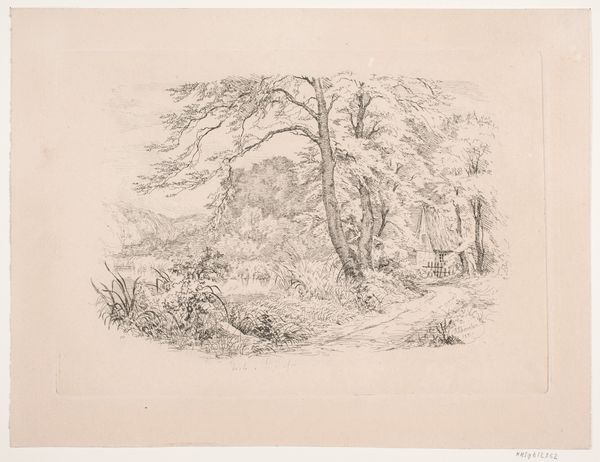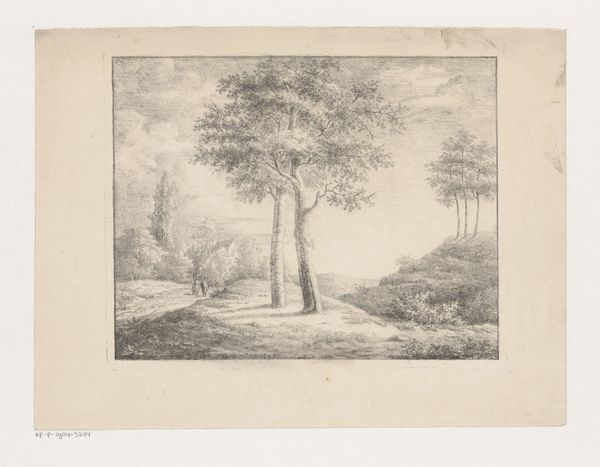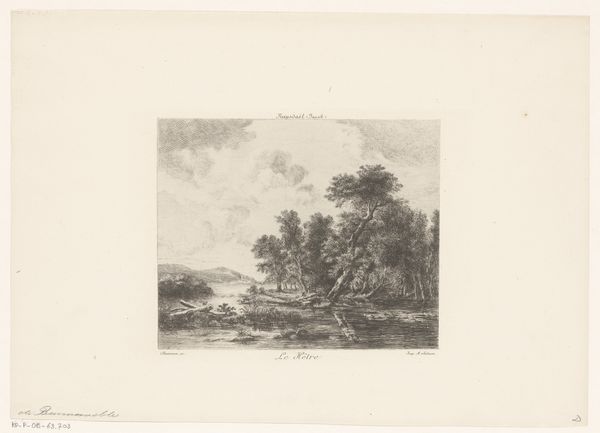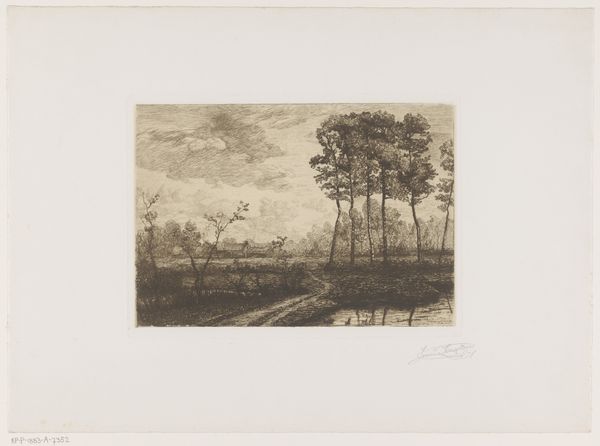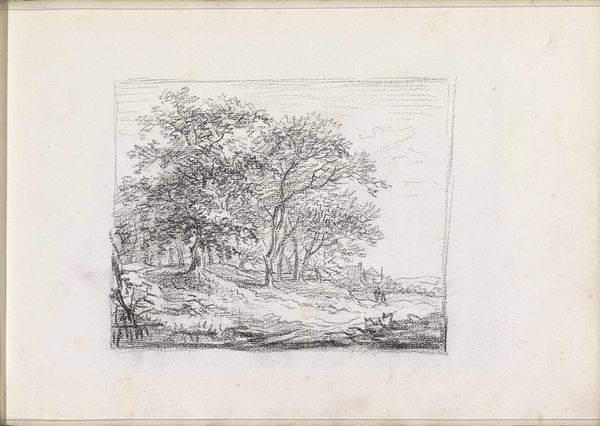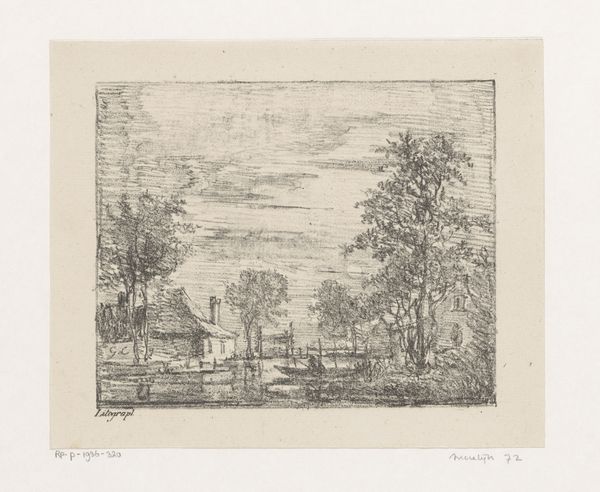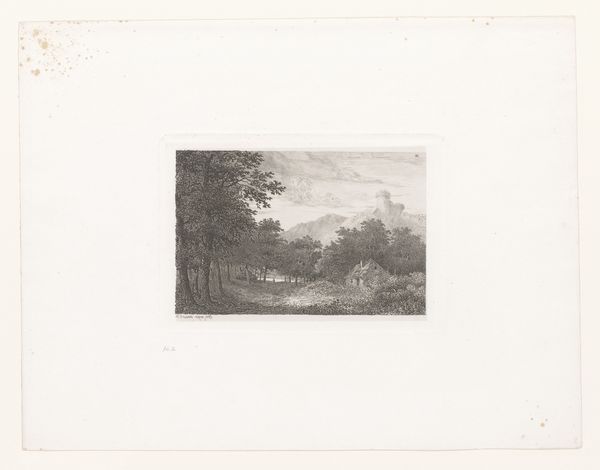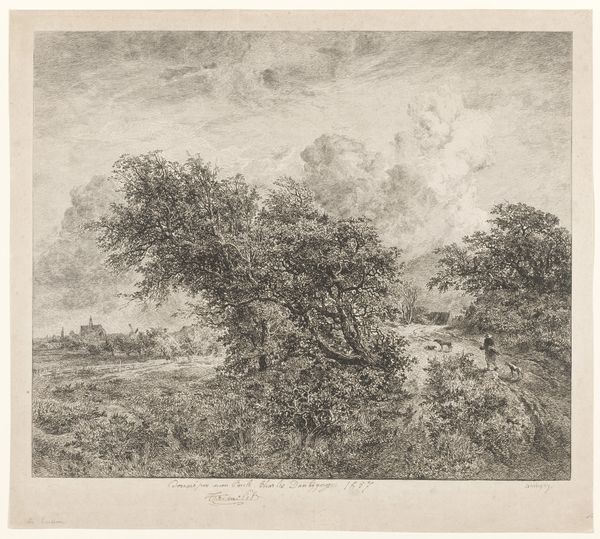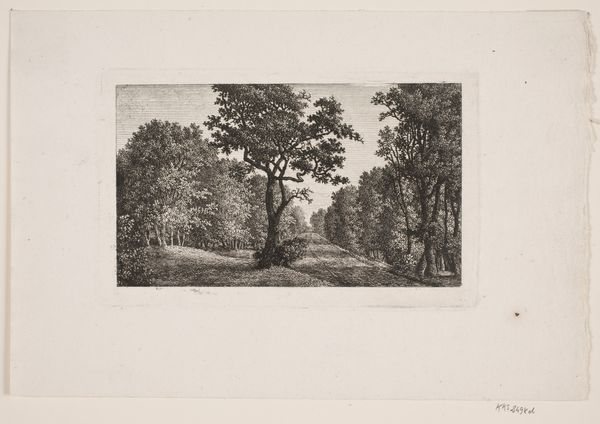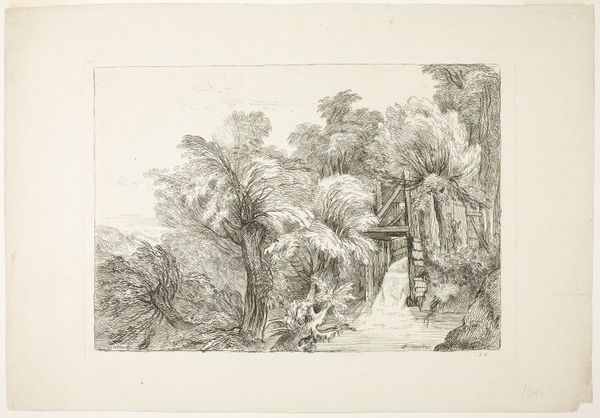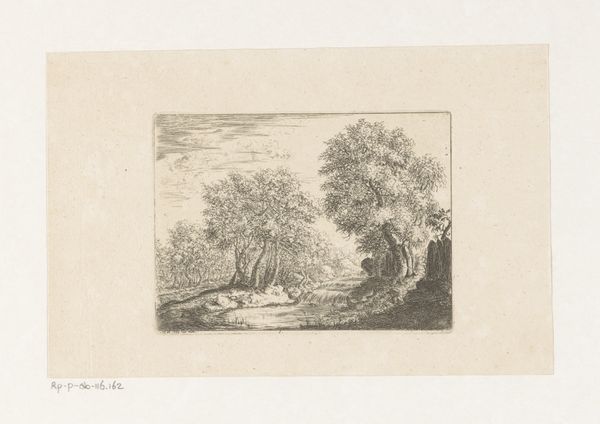
Dimensions: height 111 mm, width 121 mm
Copyright: Rijks Museum: Open Domain
Editor: We're looking at "Landscape with a White House" by Christoph Nathe, an etching from between 1763 and 1806. I’m struck by its intimacy; it feels like a hidden place. How do you interpret this work? Curator: For me, this print embodies the Romantic era's fascination with nature, but we need to look closer at the socio-political context of the time. Consider the rise of nationalism and the idealized vision of rural life. How might this "white house," seemingly modest, function as a symbol of ownership and perhaps even power dynamics? Editor: I hadn’t considered it in terms of power, just as an idyllic scene. Curator: Precisely! And that’s where critical art history comes in. Let’s think about whose land this is, who is excluded from this picture of domestic tranquility? Who gets to feel peace in the landscape, and who does not? The clean lines and cultivated trees point to control over the environment, reflecting Enlightenment ideals imposed on nature. Editor: So, it’s not just a pretty picture but a statement about the relationship between humanity and nature and a social hierarchy at the time? Curator: Exactly! And think, too, about the print medium itself. It’s reproducible, shareable, democratizing art...to some. We still need to ask, "who has access?" It serves as a visual document of the prevailing ideologies, one which is open for questioning and re-evaluation. Editor: I see it so differently now. It is a much more complex image than I thought it was when I started looking. Curator: Art allows us to investigate history and reimagine the world, to ask more interesting questions and seek more thorough, socially conscious answers.
Comments
No comments
Be the first to comment and join the conversation on the ultimate creative platform.
